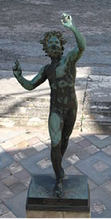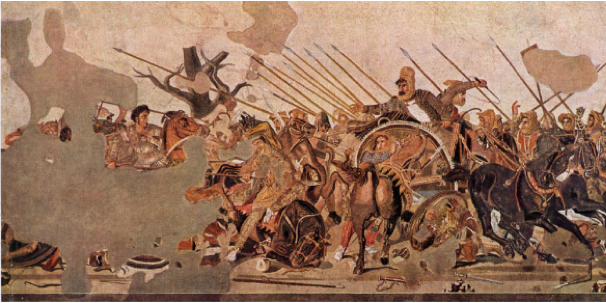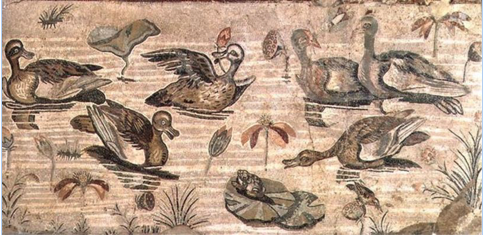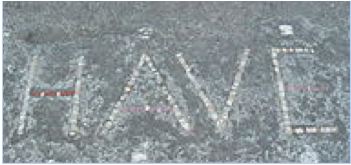House of the Faun
Significant structures/features and/or items found in the building
|
The Faun
The bronze faun statue for which the structure was named for originally stood on the lip of the impluvium, however it has since been moved to the centre of the impluvium, is a prominent feature of the building. Romans often connected fauns to Pan and the Greek satyrs as they are very similar in mythology. They were also often connected with the followers of Dionysus - the Greek god of wine. |
|
The Alexander Mosaic
One of the most notable pieces of artwork within the House of the Faun is the Alexander mosaic which covers most of the floor of the exedra (a recess in the house’s facade) and is a replica of a Greek painting made either during Alexander’s lifetime or very shortly after his death. Additionally, this mosaic was set apart from others in Pompeii as it was made from a less accessible material than what was usually used. |
|
The HAVE Mosaic
With the function of a sort of welcome mat, the entryway of the House of the Faun has the latin ‘Have’ (Hail to you) set into the pavement to welcome visitors and passer-bys. Some scholars find this aspect of the house interesting and archaeologists as the local languages of the time would have been Oscan or Samnian rather than Latin and they believe the house was actually built before the Roman colonization of Pompeii, when it was still under Oscan/Samnian influence. |
Other Areas of the Syllabus the House of the Faun Gives Evidence For...
- Private buildings - The house of the Faun is a private building as it is a house
- Everyday life - The house of the Faun demonstrates that, for some people of Pompeii, everyday life was a little different as the house included its own personal bathing facilities, slave quarters and shop fronts.
- Local political life - Archaeologists found an inscription in the house of the family name ‘Saturninus’ which suggests the house was owned by the Satria clan. A ring was also found which bore the family name of Cassius. It was concluded that a member of the Cassius family most likely married into the Satria clan. The Cassius family was an old Roman family which has ties to a ruling family of Rome.
- Influence of Greek and Egyptian cultures - Both Greek and Egyptian influences are found throughout the house within the artworks noted above; the Greek influenced Alexander Mosaic and the Nile scenes of the second mosaic.
- Everyday life - The house of the Faun demonstrates that, for some people of Pompeii, everyday life was a little different as the house included its own personal bathing facilities, slave quarters and shop fronts.
- Local political life - Archaeologists found an inscription in the house of the family name ‘Saturninus’ which suggests the house was owned by the Satria clan. A ring was also found which bore the family name of Cassius. It was concluded that a member of the Cassius family most likely married into the Satria clan. The Cassius family was an old Roman family which has ties to a ruling family of Rome.
- Influence of Greek and Egyptian cultures - Both Greek and Egyptian influences are found throughout the house within the artworks noted above; the Greek influenced Alexander Mosaic and the Nile scenes of the second mosaic.




